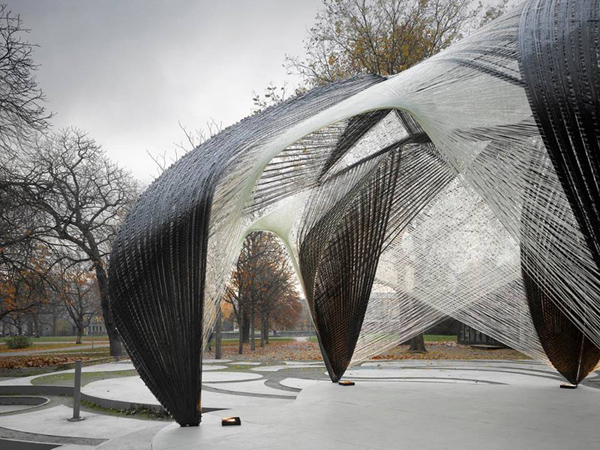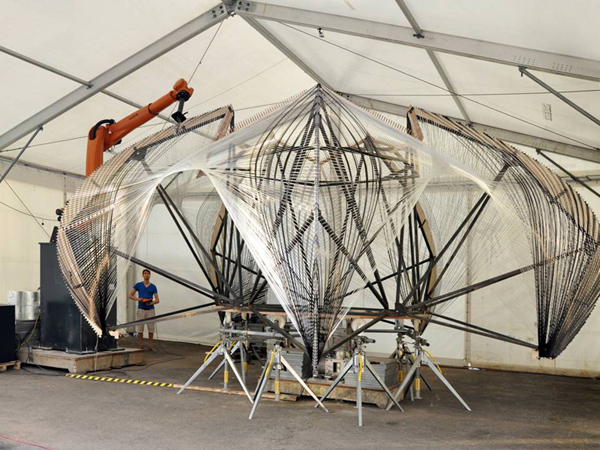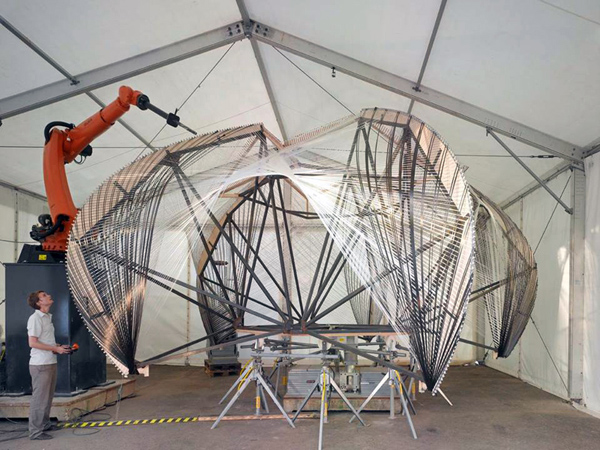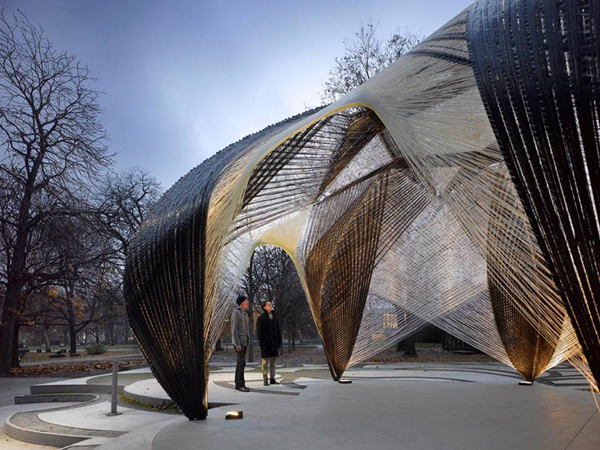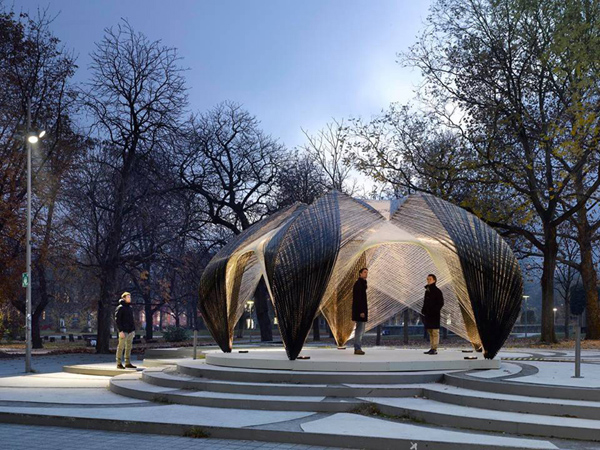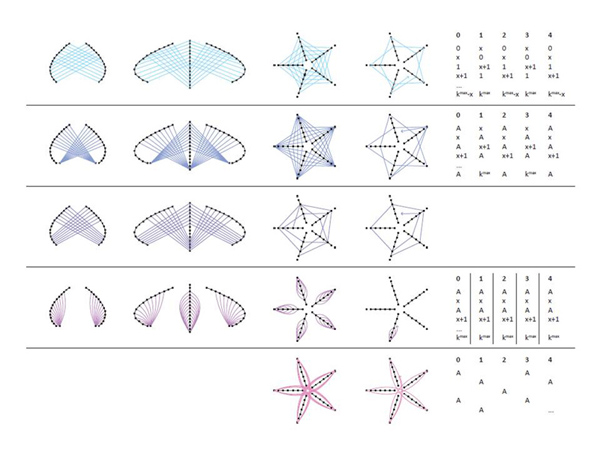This interdisciplinary project of the new research pavilion is conducted by researchers of Institute for Computational Design (ICD) together with the Institute of Building Structures and Structural Design (ITKE) at the University of Stuttgart. The pavilion is entirely robotically fabricated, from glass and carbon fiber composites and it investigates the eventual co-relation between bio-mimetic design strategies and new processes of robotic production. The new composite construction paradigm in architecture is rooted in morphological principles of arthropods’ exoskeletons.
A key point researched through the project of this pavilion was the possibility of transferring the fibrous morphology of the biological model to fiber-reinforced composite materials, which would lead to new tectonic possibilities in architecture. The high performance structure was therefore manufactured – pavilion’s shell is four millimeters thick and is spanning eight meters.
The researchers followed a “bottom-up” approach, therefore wide range of different sub-types of invertebrates were investigated in regards to the material anisotropy and functional morphology of arthropods. The observed principles were further analyzed and abstracted in order to be subsequently transferred into viable design principles for architectural applications.
In collaboration with the biologists, the fiber orientation, arrangement and associated layer thickness and stiffness gradients in the exoskeleton of the lobster were carefully investigated and the high efficiency and functional variation of the cuticle is due to a specific combination of exo-skeletal form and fiber orientation.
High level of integration the fundamental properties of biological structures enabled the transfer of heterogeneity, which lead to minimizing the material consumption while increasing material efficiency, hierarchy and function integration. The synergy of modes of computational and material design, digital simulation and robotic fabrication provides opportunity for exploration of the completely new architectural possibilities and leads to development of extremely lightweight and materially efficient structures.

